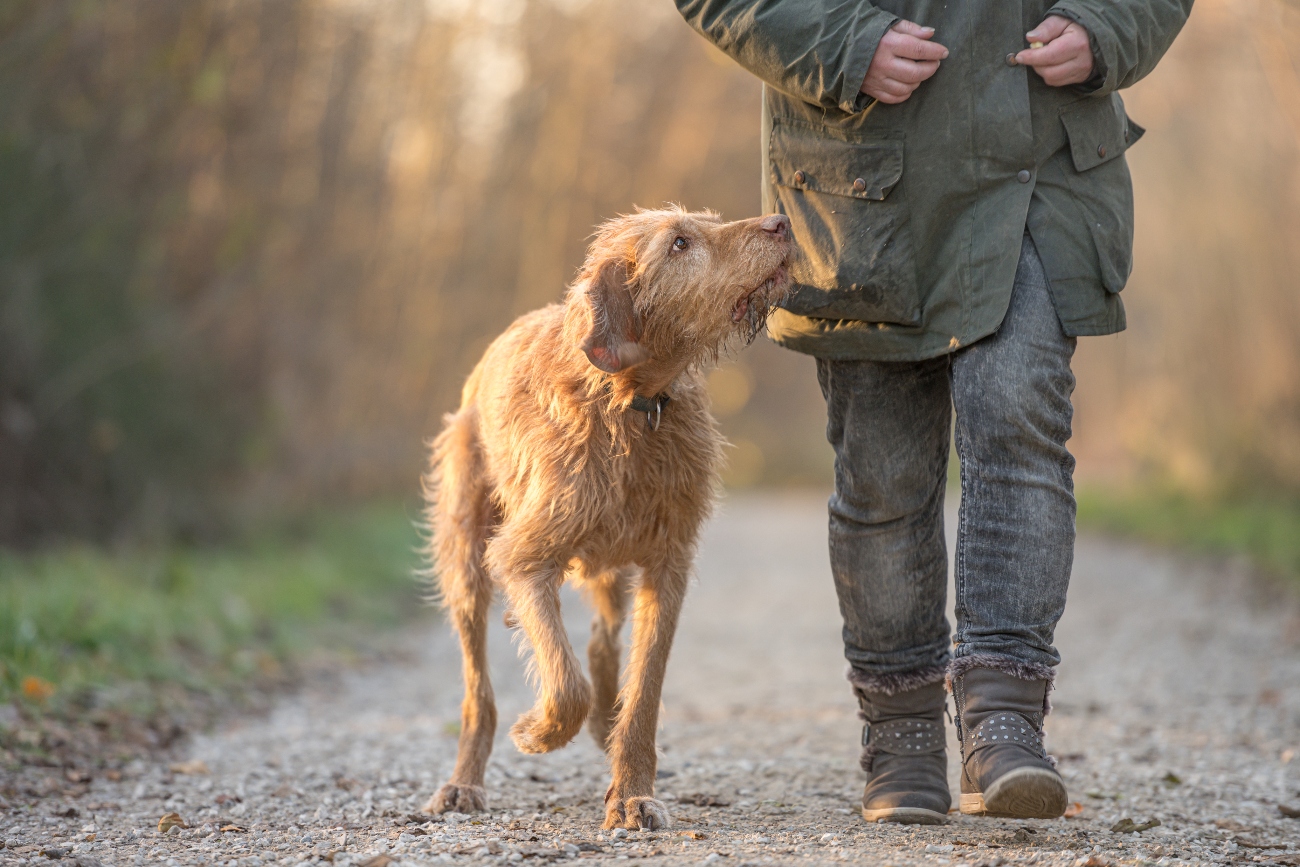Hypothyroidism in dogs
29th February, 2024

Age comes to us all, including our four-legged friends. But sometimes the signs of age may come on a bit earlier than we might expect, and they may be accompanied by some niggling health issues. That’s not unusual with ageing. But sometimes these problems also come on a bit earlier, or at the same time or they worsen quite quickly. And in those cases, maybe there's more to it. Because you may be seeing the signs of hypothyroidism.
The trouble is, because the signs are so much like ageing, it's sometimes hard to recognise the problem - and even harder to confirm a diagnosis.
Signs of Hypothyroidism in dogs
They can include:
- Gaining weight without eating more
- Slowing up
- Losing interest in play
- Losing hair, flaky skin, or other changes in a previously healthy coat
- Sleeping more
- Lying close to radiators or other heaters
- Developing a morose hang dog expression and thicker skin round their neck
Looking at that list it’s not hard to see why it can be mistaken for ageing. But with hypothyroidism we may also start to see some additional health problems.
Dogs with hypothyroidism may be more prone to:
- Recurrent skin and ear infections
- Arthritis
- Tummy upsets
- Heart disease
- Pancreatitis
What is Hypothyroidism in dogs?
Dogs with hypothyroidism can't produce enough thyroid hormone.
Thyroid hormone is an important chemical in your dog's body because it controls their metabolism. Metabolism is the speed and efficiency of all the active processes in our body - whether it's replacing skin cells, burning fuel (food) for energy, or keeping our brains alert.
Thyroid hormone is produced in the thyroid gland in your dog's neck (just like humans). Sometimes the body’s own defence cells attack it by mistake. So, it stops working.
Which dogs are at risk of Hypothyroidism?
About 1 in 400 of the doggie population has hypothyroidism. And it's most likely in middle aged, neutered dogs and certain breeds, including:
Doberman Pinschers, Boxers, Golden Retrievers, Shetland Sheepdogs, Rhodesian ridgebacks, American cockers, Alaskan, Malamutes, Red setters
How do vets diagnose Hypothyroidism?
Not easily is the answer!
A simple blood test may show your dog has low levels of thyroid hormone in their blood, (called the total T4 on their laboratory report). But the problem with this is that other illnesses can also cause low levels of total T4 in the blood. The thyroid gland may be perfectly able to produce thyroid hormone, but just about any other illness will tell it to stop. To complicate things further, some other medicines, like steroid anti-inflammatory medicine and some antibiotics, can also reduce T4 level.
So, the vet may run an additional special test to check how hard the gland has to work to produce even low levels of T4. The vet may call this a T4/TSH test.
What’s the treatment for Hypothyroidism?

Hypothyroidism in dogs can’t be cured. But the good news is that daily medicine (usually tablets) will effectively control the symptoms and complications of the illness. And quickly reverse many of the changes that low thyroid levels have already caused.
Your dog will need to take the medicine every day and visit a vet for regular check-ups and repeat blood tests. The law and governing body of vets only allows your vet to prescribe medicines long-term if they check your dog regularly. Usually that means every 3-6 months. For hypothyroidism this makes a lot of sense too. Your dog's requirements will probably change over time. Tests and checks will identify changes that may be hard to notice at home.
With the correct treatment, dogs with hypothyroidism should quickly return to a full and active life. And any accompanying health conditions may either resolve or become easier to manage.
Unfortunately for all of us, ageing is not so readily reversible, despite the early similarity of symptoms!
Hyperthyroidism in dogs
What about the opposite side of the coin? If hypothyroidism is an underactive thyroid gland, do dogs also get overactive thyroids the way humans (and cats) do?
Well, yes, they do, but the condition is very rare. Because hyperthyroidism in dogs usually results from cancer of their thyroid gland (called a thyroid carcinoma). It's more likely to affect dogs over 9 years old and larger breeds, like Golden Retrievers, Boxers, and Huskies. Males and females are equally at-risk.
Symptoms include:
- Being always hungry but losing weight
- Vomiting and diarrhoea
- Changes in their bark
- Drinking more and peeing more
- Breathing difficulties
If blood tests, imaging (x-rays, CT, MRI) and biopsies confirm the diagnosis, treatment aims to give your dog the best quality of life for as long as possible. It’s complex and expensive, including a combination of anti-thyroid medicine, surgery, and radioactive iodine treatment.
Fortunately, Thyroid carcinoma in dogs is very rare- only about 2% of all cancers diagnosed in dogs.
Helpful Pages
Recent Posts
Pet Insurance Quote
- 98% claims paid *
- Claims paid directly to vets
- 24/7 vet video consultations
- Interest free monthly payments




